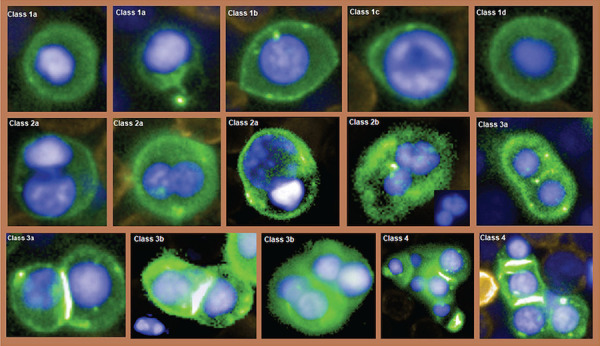Circulating erythroblast abnormality associated with systemic pathologies may indicate bone marrow damage.
Q3 Medicine
Journal of Circulating Biomarkers
Pub Date : 2021-08-31
eCollection Date: 2021-01-01
DOI:10.33393/jcb.2021.2220
引用次数: 2
Abstract
ABSTRACT Background: The circulating rare cell population is diverse and rich in diagnostic information. Its characterization and clinical exploitation by cell-based liquid biopsy is an ongoing research task. Bone marrow is one of the major contributors to the peripheral blood rare cell population and, consequently, determines individual rare cell profiles thus depending on bone marrow health status. Bone marrow damage has been associated with aggressive or late-stage systemic diseases and egress of various bone marrow cells into the blood circulation. The association of quantity and heterogeneity of circulating erythroblast with bone marrow damage is of particular interest. Methods: Circulating CD71high/CD45-/Hoechsthigh blast cells from healthy, noncancer- and cancer-afflicted donors were enriched by CD45 depletion and analyzed by immunofluorescence microscopy. Results: A new finding of aberrant and mitotic circulating erythroid-like cells that appear similar across blood donors afflicted with various systemic pathologies is reported. Further presented is a classification of said erythroblast-like cells in nine subcategories according to morphological differences between phenotypically similar cells. Conclusion: Aberrant and mitotic bone marrow-derived rare circulating erythroid-like cells can be detected in the blood of afflicted individuals but not in healthy donors, suggesting the cause of bone marrow damage.

与系统性病理相关的循环红细胞异常可能表明骨髓损伤。
本文章由计算机程序翻译,如有差异,请以英文原文为准。
求助全文
约1分钟内获得全文
求助全文
来源期刊

Journal of Circulating Biomarkers
Medicine-Biochemistry (medical)
CiteScore
3.20
自引率
0.00%
发文量
9
审稿时长
8 weeks
期刊介绍:
Journal of Circulating Biomarkers is an international, peer-reviewed, open access scientific journal focusing on all aspects of the rapidly growing field of circulating blood-based biomarkers and diagnostics using circulating protein and lipid markers, circulating tumor cells (CTC), circulating cell-free DNA (cfDNA) and extracellular vesicles, including exosomes, microvesicles, microparticles, ectosomes and apoptotic bodies. The journal publishes high-impact articles that deal with all fields related to circulating biomarkers and diagnostics, ranging from basic science to translational and clinical applications. Papers from a wide variety of disciplines are welcome; interdisciplinary studies are especially suitable for this journal. Included within the scope are a broad array of specialties including (but not limited to) cancer, immunology, neurology, metabolic diseases, cardiovascular medicine, regenerative medicine, nosology, physiology, pathology, technological applications in diagnostics, therapeutics, vaccine, drug delivery, regenerative medicine, drug development and clinical trials. The journal also hosts reviews, perspectives and news on specific topics.
 求助内容:
求助内容: 应助结果提醒方式:
应助结果提醒方式:


